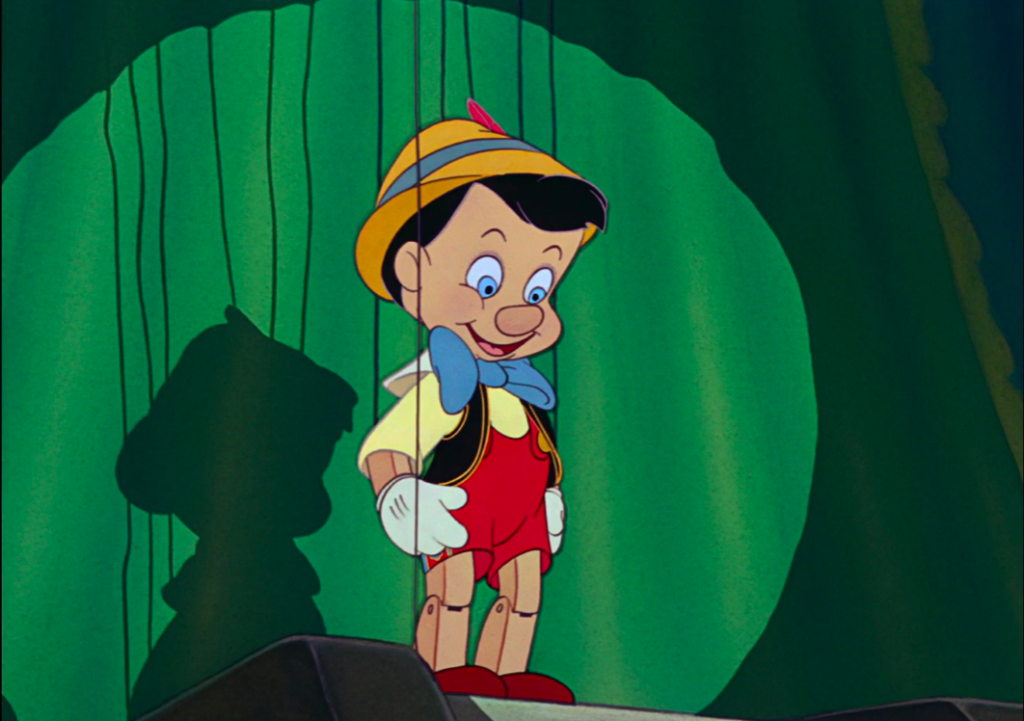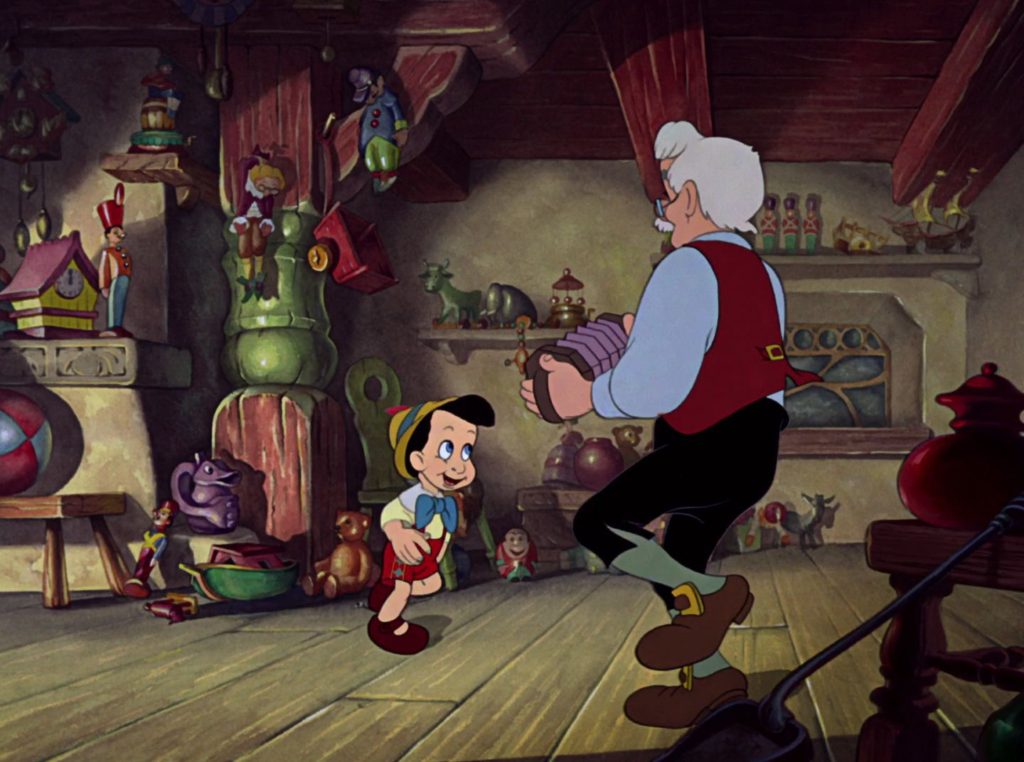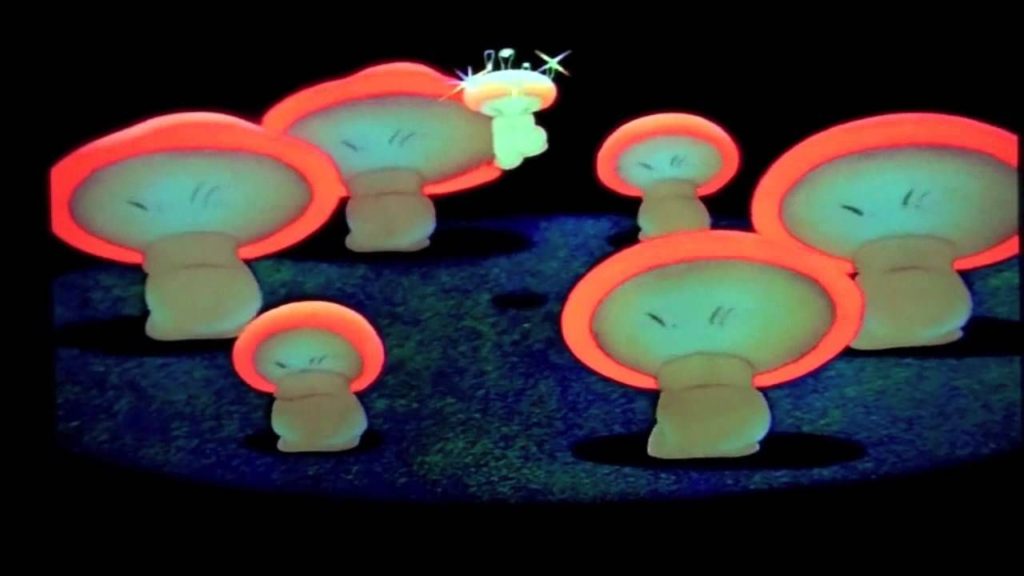What Was Disney's First Full-length Animated Film
The first instalment of an infrequent just ongoing serial in which Bahir Yeusuff goes on a musical journey of whimsey and wonder as he watches and reviews every Disney animated feature ever fabricated.
The first three, Snowfall White and the Seven Dwarves, Pinocchio, and Fantasia, represented Walt Disney's first attempts at making feature length animated films for the big screen and truly set the tone for the future of blitheness. Snowfall White, released in 1937, was considered a risky endeavour, and widely mocked past the printing at the time, referring to it as "Disney's Folly". There was a level of cynicism that followed the declaration of the feature picture, with many thinking that an animated feature, which was essentially a long drawing, would never work for the public, and that the medium of cartoons was for children, and would never interest adults.
How incorrect they were.
Snow White and the Seven Dwarfs (1937)
The story is, by now, a familiar one. Snowfall White and the Seven Dwarfs tells a princess who attempts to hide from her evil stepmother, who, when trying to impress a magical mirror on the wall, finds out that her stepdaughter was the fairest 1 of all. As its opening sequence fades into a existent shot of the opening of an elaborately decorated story volume, the movie boldly announces to the audition that what you will be watching is a reimagining of a story that you may already know.

What first stands out are the humans in the moving-picture show. There is a certain charm in the way the humans are animated. They were not the nearly perfect representation of the human form, only a tracing of the body and its movements. This was achieved by filming existent actors and and then cartoon over the frames to create animation (Vox released a slap-up video on the topic here).
The movements are fluid, svelte and beautiful, even if a lot of the faces of the characters seem sloppy and incomplete. This mode tin best exist seen in the Queen's transformation into the old hag. The animation of the Queen itself is slightly stilted, her face defective in features – much similar Snowfall White and Prince Mannerly. But as soon as she transforms into the hag, the character is suddenly full of expression – warts, witches' nose and all.

Information technology must have been an incredibly difficult and expensive thing to practise, every bit the studio never really attempted lifelike animation of humans once more until x feature animations afterward, in Cinderella, released thirteen years later.
Pinocchio (1940)
Iii years later, Walt Disney releases Pinocchio, the story of a puppet and the homo who made him. One night, as he is falling asleep, the toymaker, Geppetto, wishes upon a star, and Pinocchio comes alive. The story then follows the puppet male child as he learns to be a real boy.

Pinocchio is a truly dark coming of age tale, the male child beingness kidnapped, turned into a ass, getting swallowed past a whale, and not listening to his inner vox – made real by Jiminy Cricket.
It is hither where you really see the Walt Disney animators getting into their swing, both in animation and storytelling mode. There is truly a sense of horror as Pinocchio gets turned into a donkey. There is also real joy in the end every bit Pinocchio turns into a real boy and dances with his father.

This underlying tone of darkness is a feature of many of the earlier Disney animated features; Dumbo beingness taken abroad from his female parent, the decease of Bambi's mother, and Prince Phillip fighting a dragon in Sleeping Beauty. The stories go into some really emotionally heavy and nighttime places, which was surprising to be reminded of in 2019 in it's careful culture of safeguarding children.
Fantasia (1940)
Subsequently that same year, Disney releases Fantasia, an acid trip of a drawing, filled with classical music, dancing hippos, crocodiles, and mushrooms, every bit well as a dark brusque of Mickey Mouse falling asleep with magical brooms.

Fantasia is definitely a weird one. Compared to the previous 2 films, Fantasia does not have a story arc that runs through the film, but is instead a collection of short, beautifully fatigued, incredibly trippy, and very avant gardé animated sequences. This was ever a favourite of mine equally a kid, the beautiful music and images blending wordlessly and wonderfully to create very atmospheric cartoons.

The beginning three full length feature films released by Disney really showcase their range. Snow White and the Seven Dwarfs (1937), with it'due south more realistic human design would lead to feature films similar Cinderella (1950) and Sleeping Beauty (1959). The character pattern style of Pinocchio (1940), even so, seems to be the road Disney somewhen settles into, with its caricatured humans replicated in movies moving forward, from The Sword in the Stone (1963), to The Little Mermaid (1989) and eventually the ii Frozen movies (2013 and 2019).
For me, the Fantasia fashion of anthology characteristic films have always been a favourite. From 1943 to 1948, (in conjunction with World War 2, only that'due south another story for another time) the Disney studio released five anthology feature films, Saludos Amigos (1943), The Iii Caballeros (1945), Brand Mine Music (1946), Fun and Fancy Free (1947), and Melody Time (1948). These films were all based heavily on music and very much follows the format that began with Fantasia.
Source: https://goggler.my/the-first-three/
Posted by: bruntonthersellse1961.blogspot.com

0 Response to "What Was Disney's First Full-length Animated Film"
Post a Comment